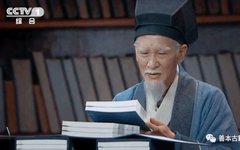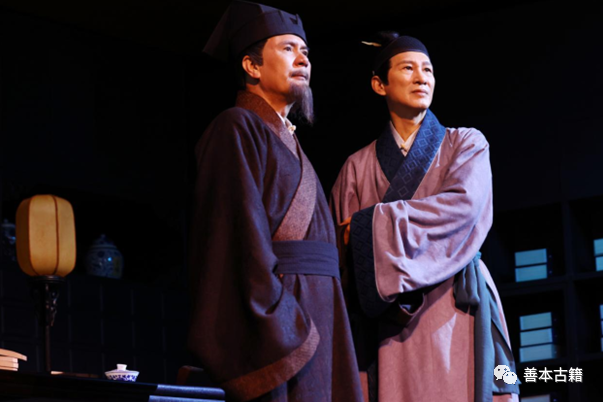
Li Shizhen was a great medical scientist and naturalist in Chinese history, dedicating his life to the epoch-making masterpiece – ‘Bencao Gangmu’ (Compendium of Materia Medica). This work has had a profound impact on the maintenance of the prosperity of the Chinese nation and the advancement and development of Traditional Chinese Medicine (TCM) and other disciplines. Recently, the Central Radio and Television Station aired an episode of ‘China in Classics’ featuring ‘Bencao Gangmu’, telling the touching story of Li Shizhen’s nearly thirty years of effort in compiling this work, paying tribute to the spirit of Chinese healers represented by Li Shizhen, who persevered against the current with a heart as strong as iron, embodying the spirit of seeking truth, caring for the people, and innovating in traditional Chinese science.
1. Viewing Li Shizhen from a Humanistic Perspective
Through long-term clinical practice, Li Shizhen developed unique personal characteristics, style, and life pursuits, which played a special role in his compilation of ‘Bencao Gangmu’. The spirit of daring to be the first is the most prominent humanistic trait of Li Shizhen; his benevolence and care for the world reflect his medical aspirations and broad-mindedness; diligence and thoughtful learning embody his unyielding attitude towards life; the pursuit of origins illustrates how Li Shizhen understood the essence of things and grasped the laws of change; his connection with the common people reflects his true nature and sentiments; and his tenacity and stubbornness are the characteristics of his persistent and unyielding personality.
2. Viewing Li Shizhen from the Compilation and Publication Process
In his long medical practice, Li Shizhen discovered numerous errors in historical medical texts, which were often extreme and conservative, affecting the clinical efficacy of later generations of physicians. He was determined to comprehensively organize and supplement the old materia medica. During the Jiajing period (1522-1567), Li Shizhen was appointed as a priest at the Chu royal palace and concurrently managed the affairs of the good doctors. After saving the Chu prince’s son, he was recommended to the Imperial Medical Institute, where he repeatedly proposed to Emperor Jiajing the need to revise the materia medica, but received no support. More than a year later, he resigned and returned home to undertake the revision.
Li Shizhen was the first to adopt a systematic classification for medicinal substances. During the writing process, he conducted extensive field investigations, traveling through present-day Hubei, Hunan, Jiangxi, and Anhui provinces, humbly seeking knowledge from local people and collecting a large number of specimens and folk prescriptions, meticulously documenting the growth and distribution of medicinal substances. After nearly thirty years of arduous effort, he finally completed this nearly two-million-word masterpiece in the sixth year of the Wanli era (1578).
After completing the manuscript, in order to publish it as soon as possible, Li Shizhen traveled extensively and even personally visited the literary leader Wang Shizhen to request a preface for the book. Unfortunately, Li Shizhen did not live to see ‘Bencao Gangmu’ published during his lifetime. Therefore, ‘China in Classics’ presented a dramatized version that allowed Li Shizhen to fulfill his lifelong wish more than four hundred years later. In the dramatization, Sa Beining led an ‘elderly Li Shizhen’ to a document room of the ‘Chinese Medical Collection’, where the white-haired Li Shizhen held ‘Bencao Gangmu’ in his hands, gently flipping through it, emotionally stating, ‘This moment, I have waited my whole life for.’
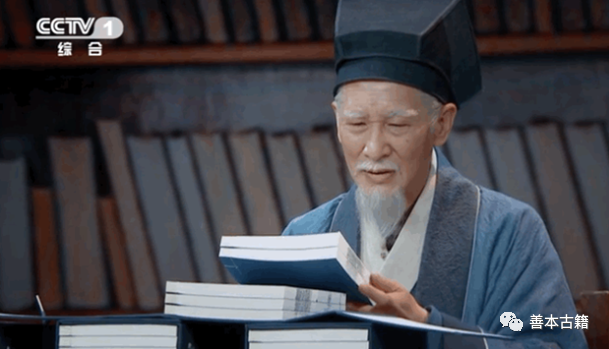
3. Viewing Li Shizhen and ‘Bencao Gangmu’ from Wang Shizhen’s Preface
‘Bencao Gangmu’ embodies the lifelong efforts of Li Shizhen and is also infused with the hard work of his family and students. The list of contributors in the first edition published in Jinling shows that Li Shizhen mobilized his four sons, four grandsons, and disciples to participate in the grand compilation project of ‘Bencao Gangmu’, which is unparalleled in the history of world science and technology.
In addition to dramatizing the family’s efforts in compiling the book, ‘China in Classics’ also reasonably restored the scene of Li Shizhen seeking a preface for the book. In order for ‘Bencao Gangmu’ to benefit the people, in 1590, Li Shizhen traveled a great distance to seek a preface from the literary master Wang Shizhen. Having heard of Li Shizhen’s noble character, Wang Shizhen was greatly impressed after reading ‘Bencao Gangmu’, praising him as ‘a true person among the North Dipper’.
Although Wang Shizhen’s evaluation of ‘Bencao Gangmu’ in his preface is only 540 characters long, it is rich in literary talent and admiration. He stated that upon opening ‘Bencao Gangmu’, ‘from ancient texts to legends, everything related is thoroughly collected’, and called ‘Bencao Gangmu’ ‘the essence of nature and principles, a comprehensive classic of material investigation. It is a secret treasure for emperors and a precious resource for the people.’ Historical verification shows that Wang Shizhen’s evaluation is by no means an overstatement.
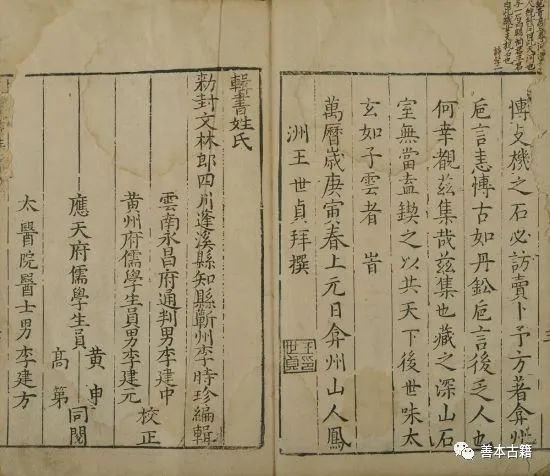
4. Viewing Li Shizhen and ‘Bencao Gangmu’ from the Perspectives of Famous Individuals or Organizations
‘Bencao Gangmu’ is one of the greatest scientific masterpieces in Chinese history, containing profound values in Chinese medicine and traditional culture. Renowned physicians throughout history have held it in high regard. For instance, in 1628, Lu Zhiqi in his work ‘Bencao Chengya Banji’ stated, ‘In modern times, no one is more dedicated to materia medica than him.’ In 1933, revolutionary pioneer Lu Xun referred to ‘Bencao Gangmu’ as ‘extremely valuable’ in his collection ‘Experiences of Southern and Northern Dialects’, listing it as essential reading. In 1956, the then president of the Chinese Academy of Sciences and renowned writer Guo Moruo inscribed: ‘The saint of medicine, the culmination of Chinese pharmacology, ‘Bencao Gangmu’ describes 1892 medicinal substances, widely collected and compiled, benefiting countless people and prolonging lives. Great is the master, whose legacy will live on with the nation.’ Li Shizhen was a great medical scientist of the 16th century and also a pioneer in botanical research.
In 1951, Li Shizhen was elected as one of the world’s top ten historical cultural figures by the United Nations’ World Peace Council. In 2011, UNESCO included ‘Bencao Gangmu’ in the ‘Memory of the World Register’, marking the first international recognition of Chinese TCM literature. To this day, ‘Bencao Gangmu’ remains an essential classic in TCM.
In summary, the contributions of ‘Bencao Gangmu’ to human society are universally recognized both domestically and internationally, leaving a brilliant page in the history of scientific and technological development in China and the world.
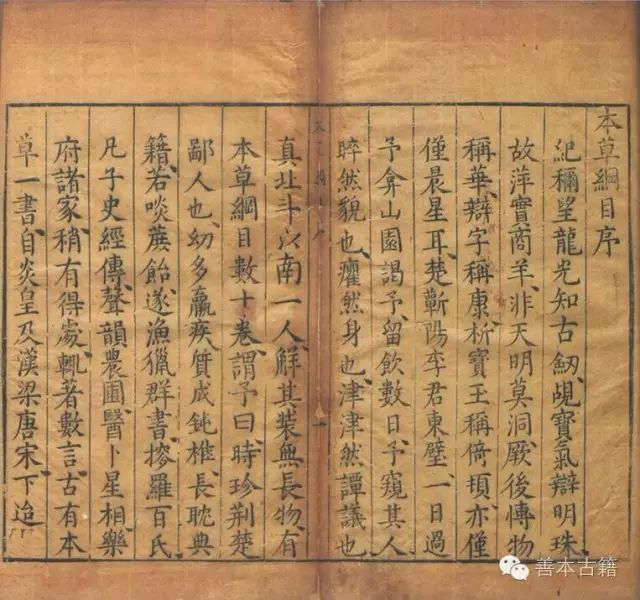
5. Viewing Li Shizhen and ‘Bencao Gangmu’ from the Perspective of Eastern and Western Influences
In Asia, the comprehensive knowledge system of ‘Bencao Gangmu’ has played a foundational role in the formation of Japan’s unique materia medica. As noted by the renowned Japanese scholar Yajima Yūri, ‘Less than twenty years after the publication of ‘Bencao Gangmu’, it was introduced to our country in the twelfth year of Keichō (1607), dominating the fields of materia medica and natural history during Japan’s Edo period, with its influence extending to the late 19th century.’ In Europe and America, in 1656, the Polish scholar Adam Schall arrived in China and translated dozens of Chinese medicinal substances from ‘Bencao Gangmu’ into Latin, pioneering European research on ‘Bencao Gangmu’. In 1723, the world-renowned scientist Bado Ming translated the properties of Chinese medicines from ‘Bencao Gangmu’ to the French Academy of Sciences, sparking great interest among French scientists. In 1726, the French Academy organized experts to conduct detailed studies on the origins, names, characteristics, and treatment methods of diseases mentioned in ‘Bencao Gangmu’, establishing a special topic for research on Chinese medicinal products.
Swedish botanist Lars Gärdner recognized the significant scientific value of ‘Bencao Gangmu’ and recommended it to the European biologist Linnaeus. Linnaeus was inspired and wrote the paper ‘Natural System’, which shocked the global scientific community upon publication. Notably, Linnaeus’s classification system was established more than 170 years after Li Shizhen’s plant classification system. In the 19th century, British biologist Charles Darwin drew upon and cited theories and examples from ‘Bencao Gangmu’, referring to it as ‘an ancient Chinese encyclopedia’.
Various woodblock editions of ‘Bencao Gangmu’ are displayed in many museums abroad. After the founding of the People’s Republic of China, many foreign scholars traveled great distances to visit the hometown of Li Shizhen, paying homage to this great scientific giant.
Renowned historian of science Joseph Needham remarked that Li Shizhen achieved scientific accomplishments that no scientist could match, and in 1986, he personally visited Li Shizhen’s tomb to pay his respects.
Thus, it is evident that Li Shizhen and ‘Bencao Gangmu’ hold a revered scientific status in the hearts of people in China and around the world, transcending borders, beliefs, and races.
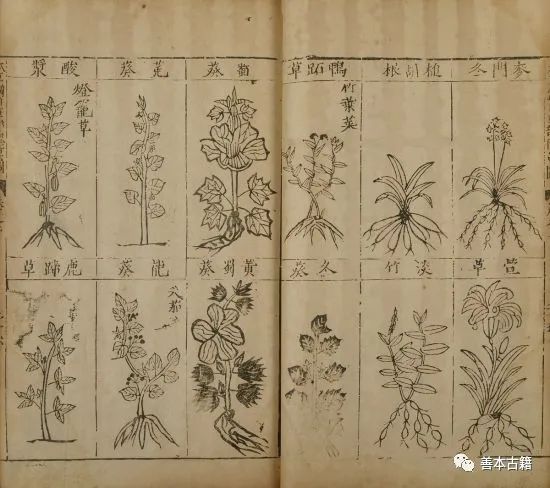
6. Viewing Li Shizhen and ‘Bencao Gangmu’ from a Scientific Value Perspective
‘Bencao Gangmu’ summarizes the rich knowledge of pharmacology in China before the 16th century, inheriting and developing the theory of medicinal properties while correcting the errors in historical materia medica. It also broke through previous models, establishing a new system of materia medica and laying the foundation for disciplines such as processing, identification, and formulation.
Li Shizhen’s classification of recorded plants into ‘sixteen categories as the framework, sixty types as the categories, each categorized by type’ broke the previous method of classification in ‘Shennong Bencao Jing’ (Shennong’s Classic of Materia Medica), which categorized substances into upper, middle, and lower grades. He proposed the most advanced and scientifically robust plant classification system of his time. This classification method, which progresses from simple to complex and from lower to higher levels, generally aligns with the objective reality of the development of the natural world, paving the way for the later establishment of Darwin’s theory of biological evolution.
Li Shizhen’s research on animals began with classification, breaking away from the indiscriminate listing of various animals in previous materia medica. He scientifically categorized animals into five groups: insects, scales, shells, birds, and beasts, further subdividing each group. These classification methods are nearly identical to modern ornithology and ichthyology.
While inheriting and developing the medical theories of his predecessors, Li Shizhen also made significant innovations in medical theory. For example, he was the first to propose the theory of the brain as the residence of the original spirit, surpassing previous thinkers and presenting the scientific argument that ‘the brain is the residence of the original spirit’, marking a major breakthrough in the foundational theories of medicine. Additionally, Li Shizhen’s contributions extend to internal medicine, acupuncture, dermatology, and even emerging fields such as geriatric medicine and emergency medicine.
7. Viewing Li Shizhen and ‘Bencao Gangmu’ from a Traditional Cultural Value Perspective
‘Bencao Gangmu’ is a unique repository of Chinese language and literature, showcasing the profound historical connotations of Chinese culture and allowing for an understanding of the origins and early forms of Chinese civilization. Li Shizhen referenced over 1,120 ancient texts in ‘Bencao Gangmu’, and no other work in the vast collection of Chinese literature has referenced as many sources as Li Shizhen’s ‘Bencao Gangmu’.
While scientific works are generally known for their rigorous structure, Li Shizhen creatively combined literary art with scientific writing, weaving ‘Bencao Gangmu’ into a garden of gold and a garden of herbs, painting a beautiful landscape that will remain in humanity’s memory.
At the same time, when explaining natural changes, physiological functions of the human body, principles of disease treatment, principles of drug compatibility, and theories of medicinal properties, Li Shizhen creatively applied the theory of yin and yang; he indirectly negated idealism and adhered to a simple materialism, believing that ‘the creation of heaven and earth is infinite, and the changes of beings are also infinite’. He analyzed phenomena using a dynamic perspective, exploring the changes in the human body, and delving into the principles of all things. This correct materialist view of nature is an important ideological foundation for his significant scientific achievements.
8. Viewing Li Shizhen and ‘Bencao Gangmu’ from a Modern Application Perspective
Since its first publication, ‘Bencao Gangmu’ has been reprinted 190 times, averaging once every 2.2 years. In China, excluding abridged editions and academic research versions, there are over 300 editions, with about 130 standard full versions reprinted, averaging once every 3.3 years; abroad (including abridged translations and full versions), there have been 61 reprints, averaging once every 7 years. From the Ming Dynasty to the present, the reprint rate has gradually increased with the progress and development of the times, which profoundly impacts Chinese TCM. Additionally, ‘Bencao Gangmu’ has spread to Asia, Europe, and America, being translated into various languages including Japanese, Korean, and English.
In addition to TCM professionals, experts from dozens of fields such as literature, botany, and zoology also reference ‘Bencao Gangmu’ as a classic in their research. Statistics show that after the founding of New China, the state has published ten editions of the Pharmacopoeia, particularly the sections on Chinese medicine in the three editions published after the founding in 1953, 1963, and 1977, all of which bear traces of ‘Bencao Gangmu’. Subsequent editions of the Pharmacopoeia have also been influenced by ‘Bencao Gangmu’. Modern research and development of new drugs often regard ‘Bencao Gangmu’ as an essential reference. Major modern TCM literature compilations also cite ‘Bencao Gangmu’ as an important classic.
9. Conclusion
In the long river of history, the 76 years of Li Shizhen’s life is but a brief moment, yet he has left humanity with an unfathomable vast ocean. As we navigate through it, we realize that ‘Bencao Gangmu’ is like a magnificent and profound sea, where modern people can only touch the ‘golden mountain’ at its surface, unable to explore its entirety. The richness of ‘Bencao Gangmu’ and the breadth of its subjects constitute a vast and diverse knowledge system, representing the historical and practical accumulation of thousands of years of the Chinese nation’s development, serving as an inexhaustible source of knowledge for human society.
When ‘China in Classics’ presents ‘Bencao Gangmu’ in a dramatized form to the audience, we cannot help but marvel again: Li Shizhen is great, and ‘Bencao Gangmu’ is magnificent! (Sun Shijiang, Wang Jian)
If you wish to participate in discussions related to ancient texts, please reply to the WeChat public account message: Group Chat
Welcome to join the circle for learning and exchanging about ancient texts

